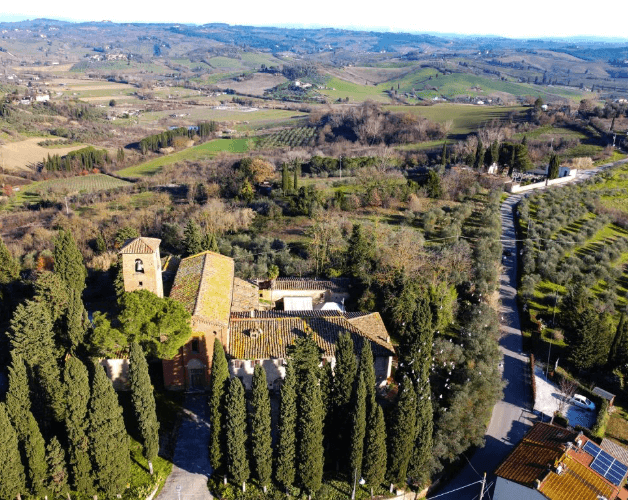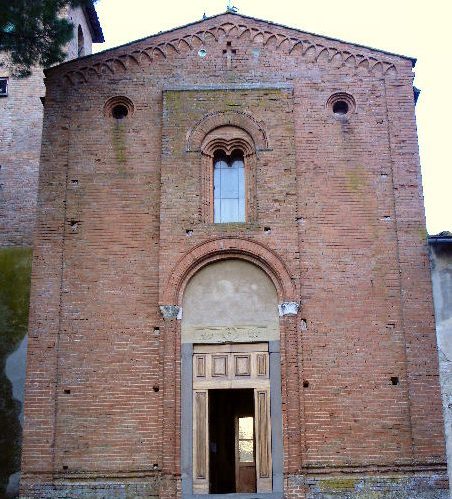It’s written Monterappoli, but it’s pronounced ‘Montrappoli’
– at least in the case of all true Empoli-area natives. A charming village perched in the hills south of Empoli, Monterappoli boasts breathtaking panoramic views and a unique old parish church.
First populated at the end of the 10th century, Monterappoli was built along via Salaiola, one of the alternative routes of the more famous Via Francigena to the left of the Elsa River. It was a prime location for business and trade, which undoubtedly aided the development of the settlement. In 1164, Frederick Barbarossa included ‘Mons Rappuli cum sua curte’ on a document granting numerous properties to the Guidi counts.


Just one year later, as we know from an inscription on the architrave, the parish church of San Giovanni Evangelista was built.. What makes this church different from most of the other buildings from the period in this area is its Val d’Elsa Romanesque style, probably owing to an architect of Lombard origin (possibly one by the name of Magister Bonseri). Entirely made of brick, the church comprises just one apsed room, and it was the original location for the Madonna and Child Enthroned with Sts Sebastian, John the Baptist, John the Evangelist and Domitilla by Rossello di Jacopo Franchi (1420 – c. 1430) that is now at the Museo della Collegiata di Sant’Andrea in Empoli.
Until at least the early 16th century, the hamlet of Monterappoli, depicted by Leonardo da Vinci in his Map of the Arno Valley (RL 12278), remained a small fortified, turreted village. Today, few traces remain of these fortifications: searching for them along the narrow streets while enjoying the view of the gentle surrounding hills makes a fun challenge for curious travellers.